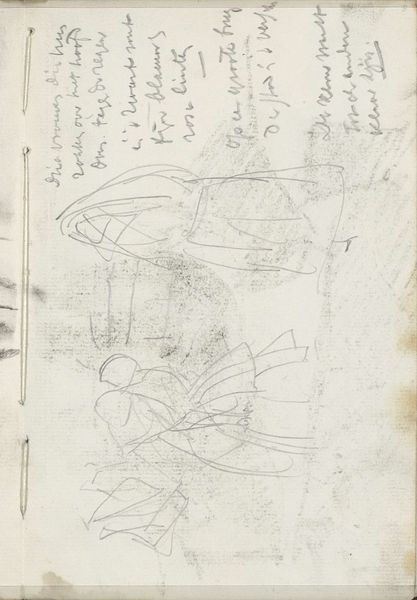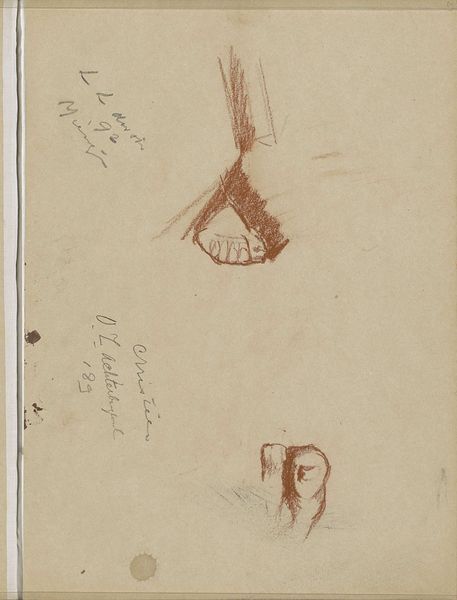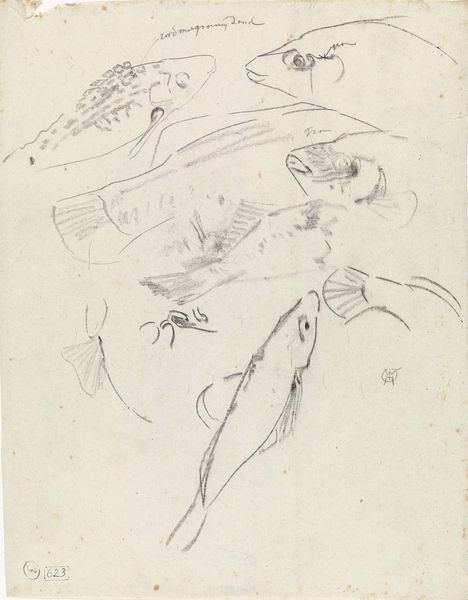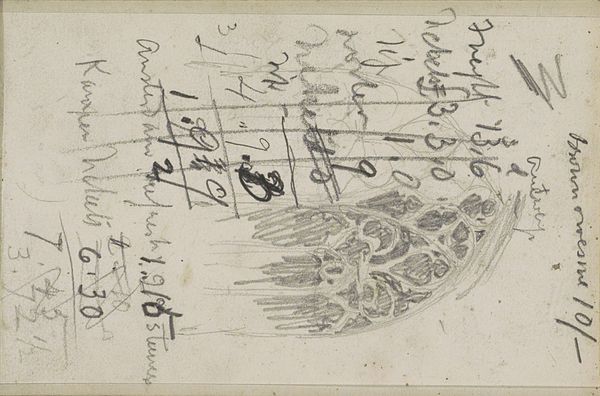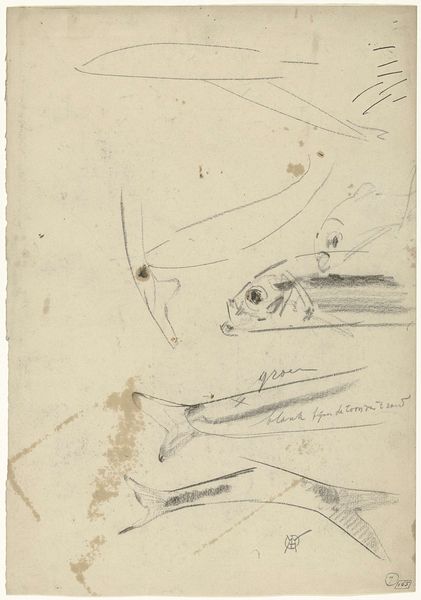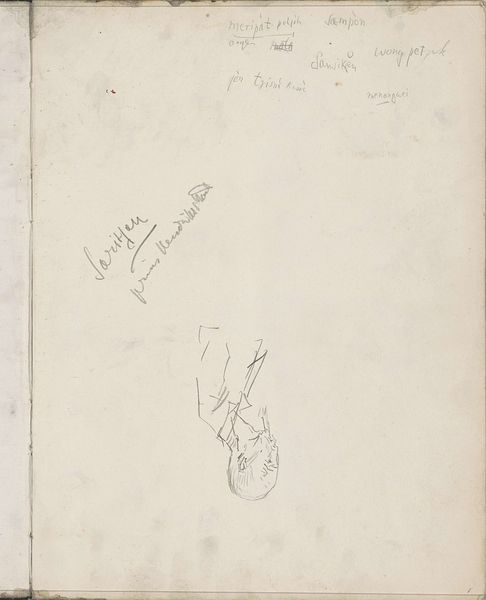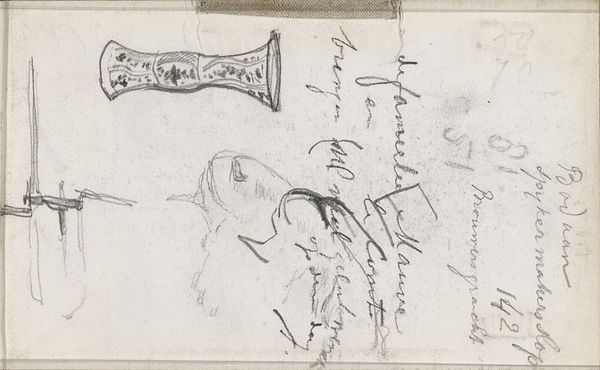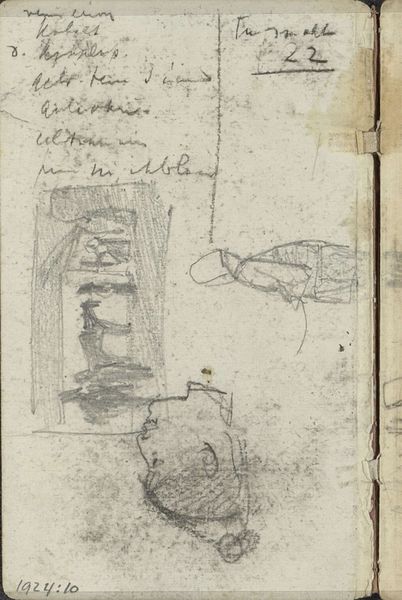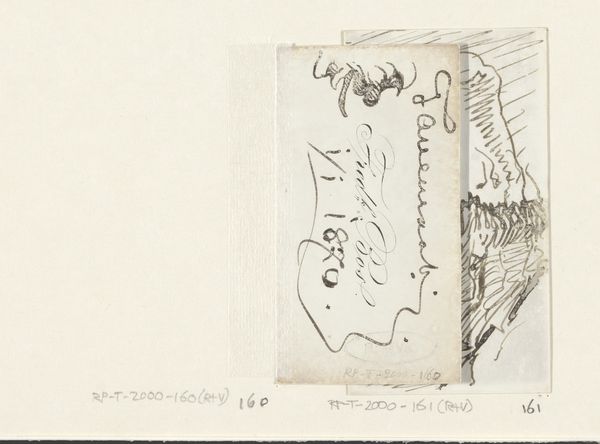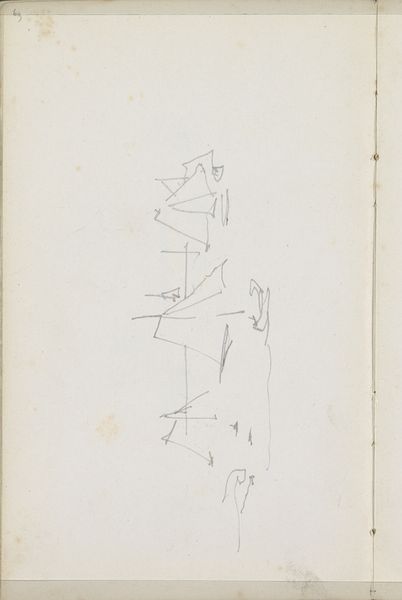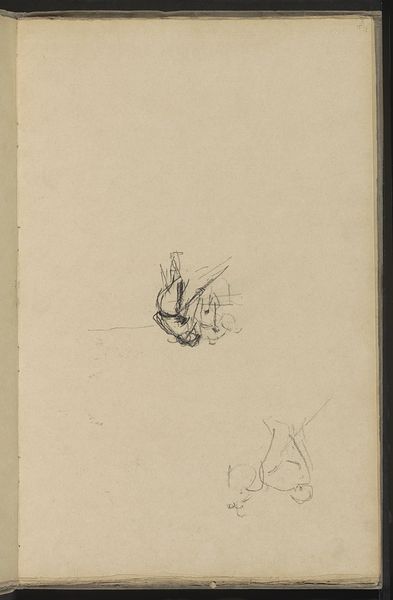
Studie van de kop en schubben van een vis, met kleurnotities 1876 - 1924
gerritwillemdijsselhof
Rijksmuseum
drawing, pencil, graphite
drawing
quirky sketch
personal sketchbook
idea generation sketch
sketchwork
pen-ink sketch
pencil
graphite
sketchbook drawing
storyboard and sketchbook work
sketchbook art
fantasy sketch
realism
initial sketch
Dimensions: height 277 mm, width 235 mm
Copyright: Rijks Museum: Open Domain
Curator: Looking at Gerrit Willem Dijsselhof's "Studie van de kop en schubben van een vis, met kleurnotities," created sometime between 1876 and 1924, what’s your immediate take? Editor: It's oddly captivating! Raw, almost clinical. The graphite and pencil sketch work really exposes the delicate structures of the fish. It’s the texture that first grabs me. Curator: It is interesting. What strikes me is how such studies provide insight into the artistic process during this period. Dijsselhof used these kinds of sketches to inform his larger designs. Editor: Exactly! He's clearly deeply engaged with the physicality of the fish. The medium serves the message of close observation. Look how he’s handled the light on the scales. How might the accessibility of such simple materials shaped artistic expression? Curator: An important question! The ease of obtaining graphite and paper would have widened artistic opportunities. Dijsselhof worked within the Arts and Crafts movement; there were many proponents in that circle advocating accessible art education and breaking down the traditional high art/craft division. Editor: And you can see this ethos in his approach here. The act of sketching itself becomes a kind of craft, a means of understanding and capturing the natural world. How do we display working drawings like this? Is it displayed for a particular pedagogical intent? Curator: Well, the Rijksmuseum likely holds it as both a study of an artist who made other prominent works and as a resource showing a typical creative process. The sketch's place within his broader oeuvre and its relationship to art historical trends of the time – that's its power here. Editor: The materiality and what we see gives us insight into not only what this artist did and cared about, but how they wanted the art-viewing public to see their practice! It really encourages thinking about art production and what constitutes an artistic creation. Curator: Absolutely. It pulls back the curtain a bit, showing us the thought processes of an artist embedded in a particular cultural and historical moment.
Comments
No comments
Be the first to comment and join the conversation on the ultimate creative platform.

